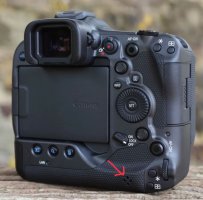If the sony A1 costs $6500 and does 30fps and 50mp, it would be crazy to buy the R3 at $6000 if it has less than 36mp. If canon is going to charge almost as much as the A1 it needs to directly compete with it. Anything less is subpar. The LCD screen difference is an insignificant difference, the IBIS in the R5 is plenty.
Again, you are assuming that MP is the only thing that matters. People have been talking for nigh on 10 years that how Sony has the technological advantage on Canon with MP and dynamic range and still Sony has barely more market share than when they ditched DSLR and went to mirrorless.
People still talk as though Cano's aim is to steal customers from Sony - it isn't. It is to maintain their position as global leader in camera sales: whether it is DSLR, MILCs or compacts. All they need to do is stay within touching distance in the technology stakes to maintain that position: yes, they took their time to enter the FF MILC market but (unlike Sony) they had to be sure they did it right first time. Since then the pace of Canon development has been highly impressive as witnessed by bring the first 8K video and the first FF bird-eye AF. Sony has historically advanced by throwing new technology with less efficient ergonomics - Canon know how highly professionals value ergonomics so technology could almost take a back seat. Sony is improving its ergonomics (and after sales care), Canon is improving its technology. The two companies are moving ever closer but that does not mean Canon need to match everything Sony does.
Upvote
0

